
| * Home * Testimonials * Classes * Programs * Schedule * Instructors *Affiliates * Photos * Links * Products * Revolution TV * |

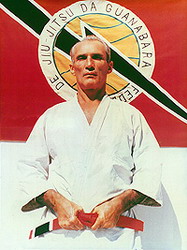
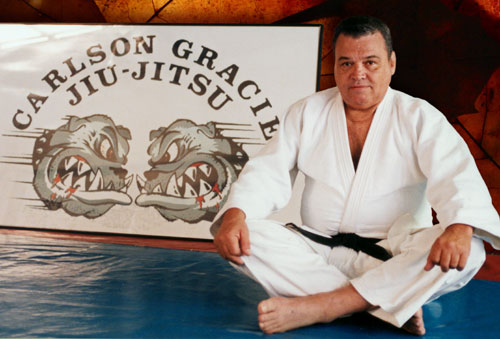
Master Maeda & Carlos Gracie Master Helio Gracie Master Carlson
In 1914, Japanese Jiu-Jitsu and Judo champion, Esai Maeda arrived in Brazil to help establish a Japanese immigration colony. Esai Maeda was aided by Gastao Gracie, a Brazilian scholar and politician of Scottish descent. To show his gratitude Maeda taught the basic secrets of Jiu-Jitsu ("the gentle art") to Gastao’s son, Carlos Gracie. Carlos would follow the example by teaching Maeda’s techniques to his brothers: Oswaldo, Gastao, Jorge, and Helio.
In 1925 they opened the first Jiu-Jitsu academy in Botafogo, a district of Rio de Janeiro, Brazil. Helio would then modify the old techniques of jiu-jitsu to help better adapt to his smaller body frame and lack of strength by basing his techniques on leverage and not strength. Furthermore, he would develop his new jiu-jitsu to reflect the fundamental theory that most street fights would end up in a grappling situation and then on the ground. To prove this theory “the Gracie Challenge” would test other Martial Arts in no-holds-barred fighting matches. Helio Gracie would go on to defeat opponents from Japan and many other countries at the weight of 140 pounds. During the 1950's to the 1970's Carlson Gracie held the family torch fighting and defeating all comers following the lead of Helio. Jiu-Jitsu from Brazil would remain undefeated for nearly 70 years in these contests. Thus, Brazilian Jiu-Jitsu was born and would forever change the training methods of martial arts forever (revised from www.bjj.org).
Revival of Brazilian Jiu-Jitsu
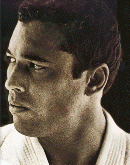
Royce Gracie
In the 1993, a new Martial Arts contest came to Pay-Per-View television called the Ultimate Fighting Championship. Originally, the event was marketed as a no-rules fighting contest that pinned different styles of fighting such as Karate, Kung-Fu, Boxing, Kickboxing, Wrestling, Sombo and Jiu-Jitsu against each other to prove, which style of fighting was the best. From the first match to the last, viewers learned very quickly that one man was winning every match he fought against bigger and stronger opponents.
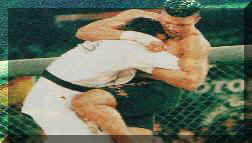 Royce Gracie at 175 lds, son of Helio Gracie, used his family system of Jiu-Jitsu called Gracie Jiu-Jitsu to best all styles of fighting. The Brazilian Jiu-Jitsu applied by Royce pointed out the importance of Grappling and Ground-Fighting in real fighting. By becoming the first 3-time winner of the Ultimate Fighting Championship, Royce Gracie was coined "the king of no-holds-bared fighting." Royce along with his older brother Rickson
Royce Gracie at 175 lds, son of Helio Gracie, used his family system of Jiu-Jitsu called Gracie Jiu-Jitsu to best all styles of fighting. The Brazilian Jiu-Jitsu applied by Royce pointed out the importance of Grappling and Ground-Fighting in real fighting. By becoming the first 3-time winner of the Ultimate Fighting Championship, Royce Gracie was coined "the king of no-holds-bared fighting." Royce along with his older brother Rickson  who went on to win the Japan Vale Tudo Open 1994 & 1995, and cousin Renzo Gracie
who went on to win the Japan Vale Tudo Open 1994 & 1995, and cousin Renzo Gracie 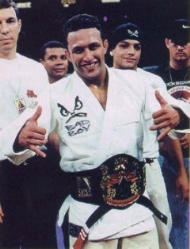 helped to strengthen the Gracie family reputation.
helped to strengthen the Gracie family reputation.
The years following the Ultimate Fighting Championship saw new rules and a new found popularity in Brazilian Jiu-Jitsu. Students around the world were determined to learn the strategies and techniques of the Gracie family until the present day.
Modern Sport Brazilian Jiu-Jitsu
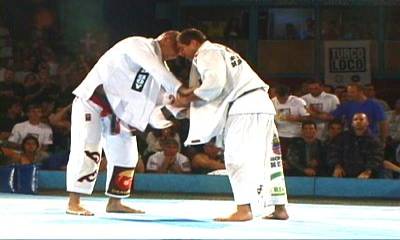
With the need for self-improvement, refinement and assessment of a student's personal Jiu-Jitsu knowledge practiced at the Martial Art's school without the focus of street fighting, the development of sport Jiu-Jitsu was further developed in Brazil. The idea of this safe contest with rules, different level & age categories, and weight classes was to follow a concepts of a Judo style match between two players. However, where Judo focused on the skills of winning a contest with the prefect throw having the opponent's back hit the mat with force or by scoring points based on pinning the opponent's back flat to the mat for 30 seconds; Brazilian Jiu-Jitsu focused on winning by submission and allowing two players as much time that was given to compete on the ground without the fear of being pinned.
The rule of not allowing two players to continue for a long period of time on the ground as in Judo changed in Sport Brazilian Jiu-Jitsu seeing two players now winning by submission having more time on the mat or scoring points based on superior ground positions, reversals and/or takedowns. Endless strategies on the feet and on the mat following safe rules setup by the Brazilian Jiu-Jitsu Federation in Rio, Brazil continue to this day. New strategies and techniques are being discovered everyday out of the motivation to win tournaments on local and world class levels. Many promoters of Sport Brazilian Jiu-Jitsu see a future in the Olympics! What is needed is national organization in several countries.
Soulfight.net All Rights Reserved 2004-2006
Proud Affiliates of

